If you’re looking for an interesting addition to your garden, yardlong beans are a must-try. These impressive beans not only add a touch of uniqueness to your backyard, but they also offer a range of health benefits. Yardlong beans are vining plants that grow vertically, making them perfect for small gardens. They are packed with fiber, vitamin C, iron, and vitamin A, making them a nutritious choice for your diet. Plus, they thrive in most climates, making them suitable for both beginner and experienced gardeners.
So if you’re ready to take your gardening skills to the next level and enjoy the delicious flavor of homegrown yardlong beans, read on to discover the best tips for growing these beans at home.
Key Takeaways:
- Growing yardlong beans can add a unique touch to your garden.
- Yardlong beans are nutritious, packed with fiber and essential vitamins.
- These beans are adaptable to various climates and suitable for all experience levels.
- Vertical growth makes yardlong beans a great choice for small gardens.
- Get ready to enjoy the delicious flavor and health benefits of homegrown yardlong beans.
Why grow yardlong beans?
There are several compelling reasons to incorporate yardlong beans into your garden. Apart from being a delicious addition to your meals, yardlong beans provide a host of nutritional benefits that can support your overall well-being. Rich in fiber, vitamins, and minerals, yardlong beans offer a fantastic way to enhance your diet and promote good health.
One of the key advantages of growing yardlong beans is their positive impact on digestion. The high fiber content of these beans can help regulate bowel movements and promote a healthy digestive system.
Furthermore, yardlong beans are packed with essential vitamins and minerals that can boost your immune system. Their vitamin C content supports the body’s natural defense mechanisms, helping fight off infections and illnesses.
Additionally, consuming yardlong beans can contribute to better vision due to their rich vitamin A content. This powerful antioxidant plays a crucial role in maintaining eye health and preventing age-related macular degeneration.
Add alt tag: Benefits of yardlong bean.
Growing your own yardlong beans ensures a fresh, homegrown supply that is readily available throughout the year. During the harvest season, yardlong beans are plentiful, allowing you to enjoy their benefits in various culinary creations. From refreshing salads to flavorful stir-fries, yardlong beans add a unique touch to a range of dishes.
To summarize, the benefits of yardlong beans include improved digestion, a strengthened immune system, enhanced vision, and the versatility to be used in diverse recipes. By growing yardlong beans in your garden, you can reap these advantages while indulging in the pleasure of homegrown produce.
Choosing the right variety
When it comes to planting yardlong beans, selecting the right variety is essential for a successful harvest. With several popular varieties to choose from, you can find the perfect bean that suits your gardening needs.
Here are some yardlong bean varieties to consider:
| Variety | Description |
|---|---|
| Dow Oka | A vigorous vining plant that produces long, slender beans with a mild flavor. Ideal for stir-fries and salads. |
| Dau Gok | A compact variety that yields tender, stringless, and flavorful beans. Great for growing in containers or small spaces. |
| Red Noodle | A unique variety with vibrant red pods that turn green when cooked. Adds a pop of color to dishes and retains its crunchiness. |
| Kwintus | A high-yielding variety that produces extra-long beans, perfect for slicing and stir-frying. |
Image Related to Yardlong Bean Varieties:
Each yardlong bean variety offers its own distinct characteristics, so choose based on your preferences and available growing space. Whether you prefer traditional green beans or want to add a splash of color to your dishes, there’s a variety that will meet your needs.
Growing conditions
To successfully grow yardlong beans, it’s important to provide them with the right growing conditions. Here are some key factors to consider:
Sunlight
Yardlong beans thrive in full sun, so choose a location in your garden that receives at least 6-8 hours of direct sunlight per day. This will ensure optimal growth and development.
Soil
Yardlong beans prefer well-draining, loamy soil that is rich in organic matter. Before planting, prepare the soil by incorporating compost or well-rotted manure to improve fertility and drainage.
Watering
Yardlong beans require regular watering to thrive. Aim to provide about 1-2 inches of water per week, either through rainfall or supplemental irrigation. Avoid overwatering to prevent root rot.
Soil Temperature
The ideal soil temperature for yardlong bean germination is at least 65 degrees Fahrenheit. If the soil is too cold, seeds may fail to sprout or develop properly.
Planting
Plant yardlong bean seeds directly into the soil, as they don’t transplant well. Sow the seeds about 1 inch deep and space them 3-4 inches apart. Ensure proper spacing to allow for adequate air circulation and reduce the risk of disease.
| Growing Conditions | Requirements |
|---|---|
| Sunlight | 6-8 hours of direct sunlight per day |
| Soil | Well-draining, loamy soil rich in organic matter |
| Watering | About 1-2 inches of water per week |
| Soil Temperature | At least 65 degrees Fahrenheit for germination |
| Planting | Sow seeds directly into the soil, 1 inch deep and 3-4 inches apart |
Providing support
As your yardlong beans grow, they will require a support structure to climb on. This will help them grow vertically and ensure the weight of the beans is supported. There are several options for providing support:
- Trellis: A trellis is a popular choice for supporting yardlong beans. It consists of a framework of vertical posts or stakes with crisscrossing horizontal wires or strings to guide the beans upwards.
- Stake: Another option is to use stakes, which are long, sturdy poles driven into the ground near the plants. The beans can be trained to grow up the stake by gently tying them with twine.
- Fence: If you have a fence in your garden, you can utilize it as a support structure for your yardlong beans. Allow the beans to climb up the fence, using hooks or ties to secure the vines.
Whichever support structure you choose, make sure it is at least 7 feet tall to accommodate the length of the beans. Additionally, ensure the support is well-anchored and sturdy to prevent it from toppling over in strong winds or under the weight of the growing beans.
Providing some form of support for your yardlong beans will help them grow vertically and produce abundant pods.
Planting and care
Planting and caring for yardlong beans is relatively easy, and with the right techniques, you can ensure a successful harvest. Follow these steps to grow healthy and abundant yardlong beans in your garden:
Timing
Plant yardlong bean seeds in the spring after the final frost has passed and the soil has warmed up. This ensures that the seeds have optimal conditions for germination and growth.
Seed depth and spacing
Sow the yardlong bean seeds about 1 inch deep in the soil. Dig a small hole with your finger or a garden tool and place the seed inside. Space the seeds 3-4 inches apart to provide enough room for the plants to grow.
Thinning seedlings
Once the seedlings emerge, it’s important to thin them to ensure proper spacing and airflow. Thin the seedlings to 6-8 inches apart, removing the weaker or overcrowded plants. This allows the remaining plants to grow vigorously and produce more beans.
Watering
Yardlong beans prefer consistent moisture but are fairly drought-tolerant. Water the plants regularly, providing 1 inch of water per week. Avoid over-watering, as soggy soil can lead to root rot and other problems.
Fertilization
Avoid over-fertilization with nitrogen, as it can contribute to excessive foliar growth at the expense of bean production. Yardlong beans can benefit from a balanced fertilizer with moderate nitrogen levels. Consult the fertilizer packaging for specific instructions on application rates and frequency.
Pest management
Monitor your yardlong bean plants for common pests such as aphids and caterpillars. These pests can feed on the leaves and pods, causing damage to the plants. Use organic insecticides or pest control methods to protect your yardlong beans from infestations.
Quote
I’ve found that providing consistent care and attention to my yardlong bean plants pays off with an abundant harvest. By following these planting and care tips, you can grow healthy, vigorous plants that produce an abundance of delicious beans.
By following these planting and care guidelines, you’ll be well on your way to growing lush and productive yardlong beans in your own garden.
| Planting and Care Tips for Yardlong Beans | |
|---|---|
| Timing | Plant in the spring after the final frost |
| Seed depth and spacing | Sow seeds 1 inch deep, 3-4 inches apart |
| Thinning seedlings | Thin seedlings to 6-8 inches apart |
| Watering | Provide 1 inch of water per week |
| Fertilization | Avoid over-fertilization with nitrogen |
| Pest management | Monitor for pests and use organic pest control methods |
Harvesting
Once your yardlong beans have reached a sufficient size, it’s time to start harvesting. The ideal length for harvesting is around 10-12 inches, with a diameter of about 3/8 inch. At this stage, the pods are tender and packed with flavor, making them perfect for culinary use.
If left to mature, yardlong beans can grow up to an impressive 3 feet long. However, these mature beans tend to be tougher and less palatable. For the best taste and texture, it is recommended to harvest the pods when they are still young and tender.
To harvest the yardlong beans, simply snap or cut the pods from the plant using a pair of clean pruning shears or garden scissors. Be careful not to damage the plant or other developing pods while harvesting.
It’s important to note that yardlong beans are prolific producers and will continue to bear new pods for several weeks, giving you a continuous supply throughout the growing season. Regular harvesting not only ensures a steady harvest but also promotes the plant’s continued productivity.
“Harvesting yardlong beans at the right stage of maturity ensures the best flavor and tenderness. Enjoy the satisfaction of picking your own homegrown beans and savor their delicious taste in your favorite recipes!”
Tips for Harvesting Yardlong Beans
- Inspect the pods regularly to determine their size and maturity level.
- Harvest the beans in the morning when they are cool and crisp.
- Use clean pruning shears or garden scissors to prevent the spread of diseases.
- Handle the beans gently to avoid bruising or damaging the tender pods.
- Plan your harvest schedule to ensure a continuous supply of beans throughout the season.
| Common Signs of Readiness for Harvest |
|---|
| Pod length reaches 10-12 inches |
| Pod diameter reaches approximately 3/8 inch |
| Pods are firm and bright green in color |
| Seeds inside the pod are still small and undeveloped |
| Pods snap easily when bent |
Storage and preservation
Freshly harvested yardlong beans are a flavorful addition to any meal. To ensure their freshness and longevity, proper storage and preservation techniques are essential. Here are some tips:
Refrigeration
Place the freshly harvested yardlong beans in a perforated plastic bag to allow for airflow. This helps to maintain their crispness and prevent moisture buildup, extending their shelf life. Store the bag in the refrigerator vegetable drawer, where the temperature is cool but not too cold.
Freezing
If you want to preserve yardlong beans for an extended period, freezing is an excellent option. Start by blanching the beans to retain their color, texture, and nutrients. Bring water to a rolling boil, submerge the beans for about a minute, then transfer them to ice water to halt the cooking process. Drain the beans thoroughly and place them in airtight containers or freezer bags.
Usage in Diverse Dishes
Yardlong beans are incredibly versatile and can be used in various dishes to add a unique flavor and texture. Here are some popular yardlong bean dishes:
- Stir-fries: Sauté yardlong beans with other vegetables, protein, and spices for a quick and nutritious meal.
- Salads: Add blanched or raw yardlong beans to fresh green salads for a crisp and refreshing addition.
- Soups and stews: Include yardlong beans in hearty soups and stews to enhance their flavor and add a healthy element.
Explore the culinary possibilities with yardlong beans and let your creativity flourish in the kitchen! Whether you prefer them cooked or raw, these beans are sure to impress with their taste and nutritional value.
Common problems and pests
While yardlong beans are generally resilient and pest-resistant, there are certain pests and diseases that can affect them. It’s important to regularly inspect your plants and take appropriate measures to control these issues. Here are some common problems and pests that you may encounter:
Aphids
Aphids are small, soft-bodied insects that feed on the sap of plants. They can be found on the leaves and stems of yardlong beans and can cause damage by sucking out the plant’s nutrients. To control aphids, you can spray the affected areas with a mixture of water and dish soap or use insecticidal soap. Encouraging natural predators like ladybugs can also help to control aphid populations.
Thrips
Thrips are tiny, winged insects that feed on the leaves and flowers of yardlong beans. They cause damage by piercing the plant cells and sucking out the contents. To control thrips, you can use insecticidal soap or neem oil. Removing and discarding heavily infested leaves can also help to reduce the population.
Worms and Caterpillars
Worms and caterpillars can feed on the leaves and pods of yardlong beans, causing extensive damage. Handpicking the pests and destroying them is an effective control method. You can also use organic insecticides like Bacillus thuringiensis (Bt) to target these pests.
Bacterial Blight
Bacterial blight is a bacterial disease that affects the leaves and pods of yardlong beans. It causes dark-colored lesions and can lead to wilting and death of the plant. The best way to prevent bacterial blight is to practice good garden hygiene by keeping the plants well-spaced and removing any infected plant debris promptly.
Powdery Mildew
Powdery mildew is a fungal disease that appears as a white powdery coating on the leaves of yardlong beans. It can cause stunted growth and a decline in plant health. To control powdery mildew, you can use fungicides specifically formulated for powdery mildew or apply a homemade solution of baking soda and water. Ensuring good air circulation around the plants can also help to prevent the disease.
Remember to monitor your yardlong beans regularly for any signs of pests or diseases. Early detection and intervention can help prevent the spread of infestations and ensure the health of your plants.
| Pest | Description | Control Measures |
|---|---|---|
| Aphids | Small, soft-bodied insects that feed on plant sap | – Spray with water and dish soap mixture – Use insecticidal soap – Encourage natural predators like ladybugs |
| Thrips | Tiny, winged insects that damage leaves and flowers | – Use insecticidal soap or neem oil – Remove heavily infested leaves |
| Worms and Caterpillars | Feeds on leaves and pods, causing damage | – Handpick and destroy pests – Use organic insecticides like Bt |
| Bacterial Blight | Bacterial disease causing dark lesions | – Practice good garden hygiene – Remove infected plant debris |
| Powdery Mildew | Fungal disease appearing as white powdery coating | – Use fungicides for powdery mildew – Apply baking soda and water solution – Ensure good air circulation |
Tips for success
When it comes to growing yardlong beans, there are a few essential tips to keep in mind for a bountiful harvest. Follow these guidelines to ensure your yardlong beans thrive:
- Choose a sunny location: Yardlong beans thrive in full sun, so select a spot in your garden that receives at least 6-8 hours of direct sunlight daily.
- Prepare the soil: Before planting, ensure that your soil is well-draining and rich in organic matter. Incorporate compost or aged manure to improve soil fertility.
- Plant at the right time: Wait until all frost has passed and the soil has warmed up before planting yardlong beans. This is typically in the springtime.
- Provide proper support: Yardlong beans are vining plants and require sturdy support structures. Install a trellis, stake, or fence that is at least 7 feet tall to accommodate their vigorous growth.
- Maintain consistent moisture: Water your yardlong beans regularly, providing approximately 1 inch of water per week. Avoid overwatering, as excessive moisture can lead to root rot.
- Monitor for pests: Keep an eye out for common pests such as aphids and caterpillars. If necessary, use organic insecticides to control infestations and maintain the health of your plants.
- Harvest at the right time: Harvest yardlong beans when they reach about 10-12 inches in length and 3/8 inch in diameter. These young pods are tender and have the best flavor.
- Rotate crops: To prevent soil-borne diseases and maintain soil fertility, practice crop rotation by planting yardlong beans in a different location each year.
By following these tips, you’ll be well on your way to a successful yardlong bean harvest and enjoy the delicious taste of these versatile beans in your favorite dishes.
“Proper preparation, support, and watering are key to growing thriving yardlong beans. Don’t forget to harvest the young pods for the best flavor!”
Yardlong bean recipes and nutrition
Yardlong beans, also known as asparagus beans or snake beans, offer a delicious and nutritious addition to various dishes. Whether you prefer traditional Asian stir-fries or Western-style salads and side dishes, yardlong beans can be prepared in numerous ways to satisfy your taste buds. Their vibrant color, crisp texture, and subtle flavor make them a versatile ingredient in many cuisines.
Here are some popular yardlong bean recipes to inspire your culinary creativity:
-
Stir-fried Yardlong Beans with Garlic and Soy Sauce
This classic Asian dish combines the crunchiness of yardlong beans with the savory flavors of garlic and soy sauce. It’s a quick and easy recipe that can be enjoyed as a side dish or a vegetarian main course.
-
Grilled Yardlong Beans with Lemon and Herbs
Grilling yardlong beans enhances their natural sweetness and imparts a smoky flavor. Tossed with fresh lemon juice, herbs, and a drizzle of olive oil, this recipe is perfect for summer barbecues and outdoor gatherings.
-
Yardlong Bean Curry
Inspired by Indian cuisine, this hearty curry combines yardlong beans with fragrant spices, coconut milk, and tomatoes. Serve it with steamed rice or naan bread for a satisfying and flavorful meal.
Incorporating yardlong beans into your meals not only adds variety and flavor but also provides several nutritional benefits. Yardlong beans are low in calories and high in fiber, making them a healthy choice for weight management and digestive health. They are also rich in vitamin C, iron, and vitamin A, which support immune function, iron absorption, and vision health, respectively.
Here’s a snapshot of the nutritional value of yardlong beans per 100 grams:
| Nutrient | Amount |
|---|---|
| Calories | 47 |
| Fiber | 3.6 grams |
| Vitamin C | 42 milligrams |
| Iron | 1.6 milligrams |
| Vitamin A | 790 IU |
With their culinary versatility and nutritional profile, yardlong beans are a valuable addition to any diet. Start exploring the world of yardlong bean recipes and enjoy the taste and health benefits they offer.
Conclusion
Growing yardlong beans at home is a rewarding experience that offers numerous benefits. Firstly, yardlong beans impress with their impressive size, growing up to 3 feet long, making them a visual feast in any garden. Additionally, these beans are abundant during harvest time, providing a bountiful supply of fresh produce. The versatility of yardlong beans in the kitchen is another advantage, as they can be enjoyed raw or cooked and used in various recipes, from salads to stir-fries.
Furthermore, yardlong beans offer substantial health benefits. Packed with fiber, vitamin C, iron, and vitamin A, they contribute to a well-balanced diet and support overall health. These nutritious beans aid in digestion, boost the immune system, and promote better vision. By incorporating yardlong beans into your meals, you can enhance both the flavor and nutritional value of your dishes.
By following the tips and guidelines provided in this article, you can cultivate lush yardlong beans successfully. Whether you have a small garden or are an experienced gardener, yardlong beans are suitable for all skill levels. So why wait? Start growing your own yardlong beans today and elevate your gardening and culinary experiences!

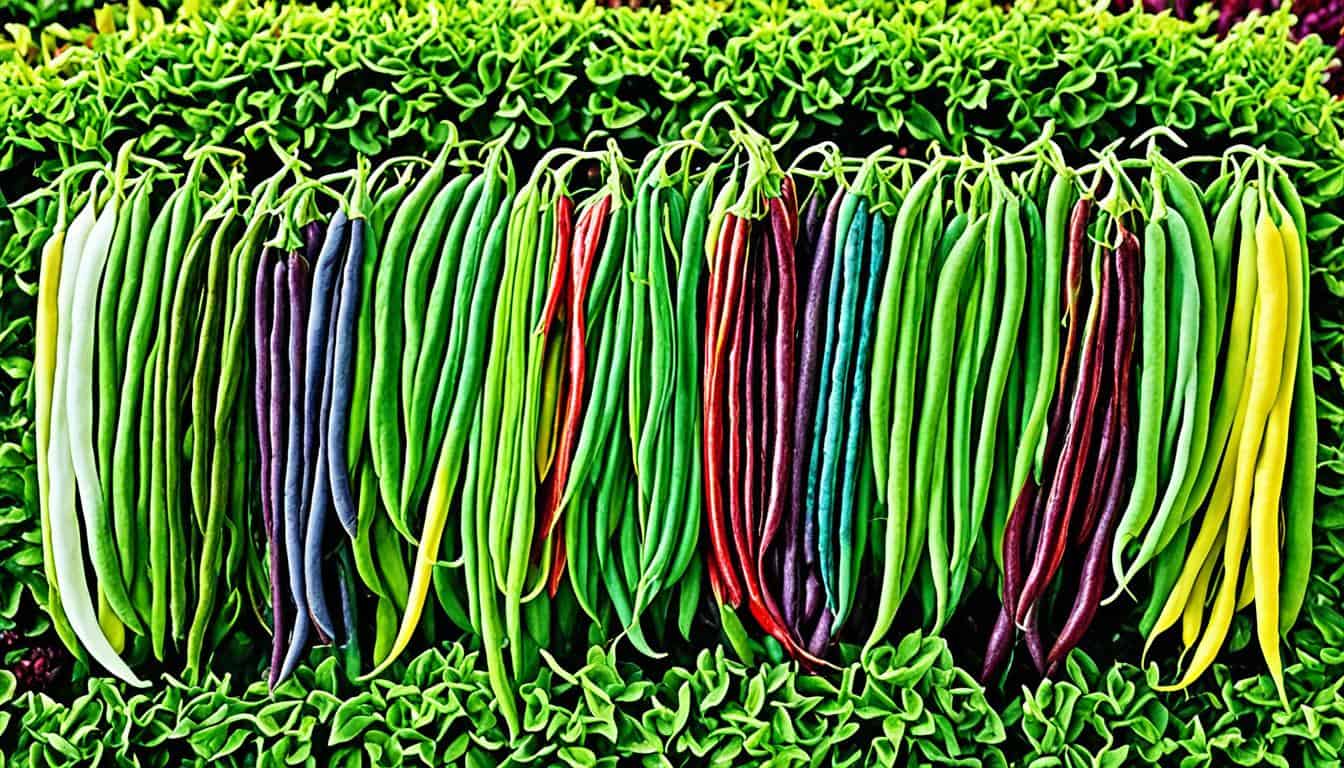
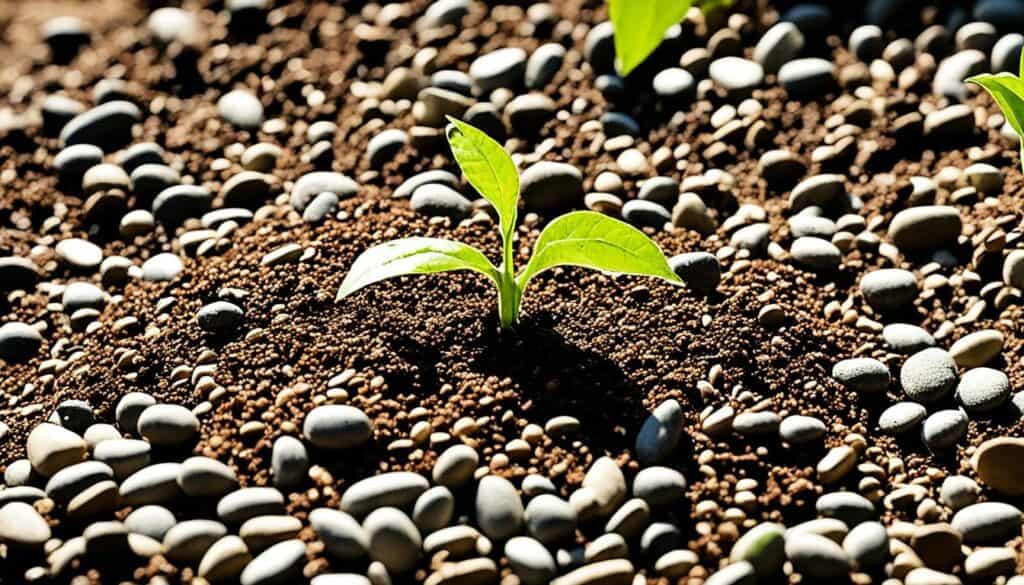
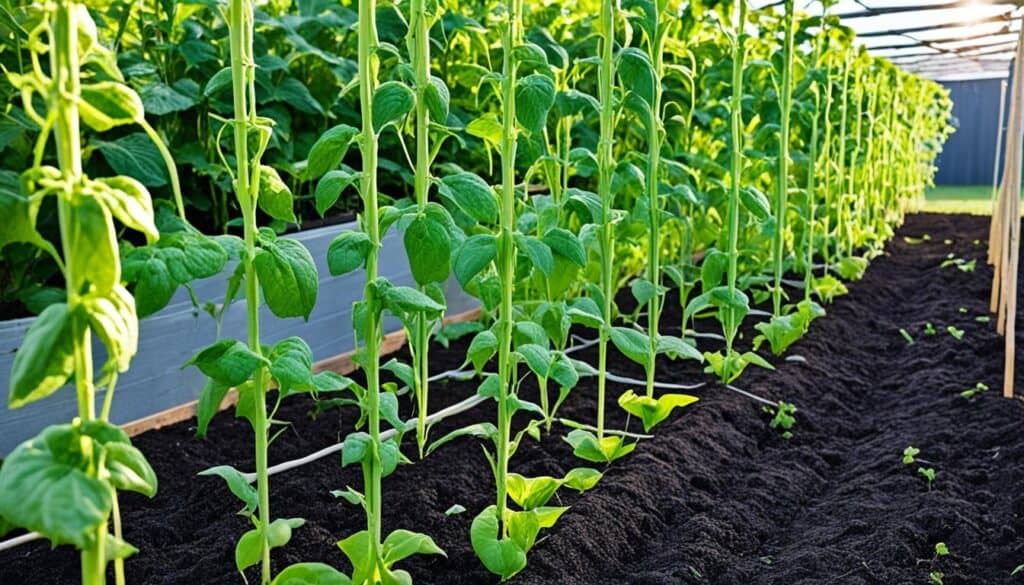

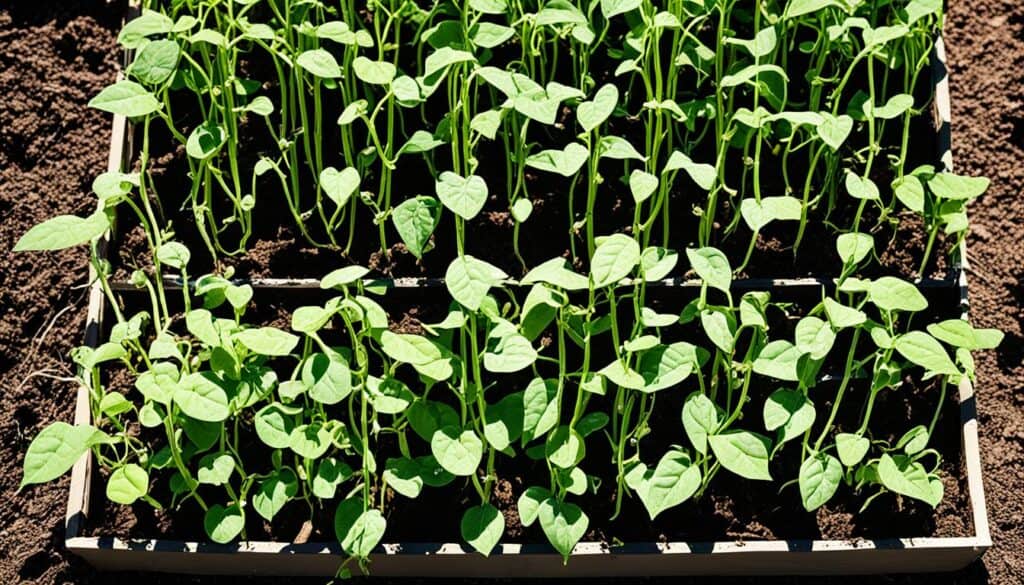
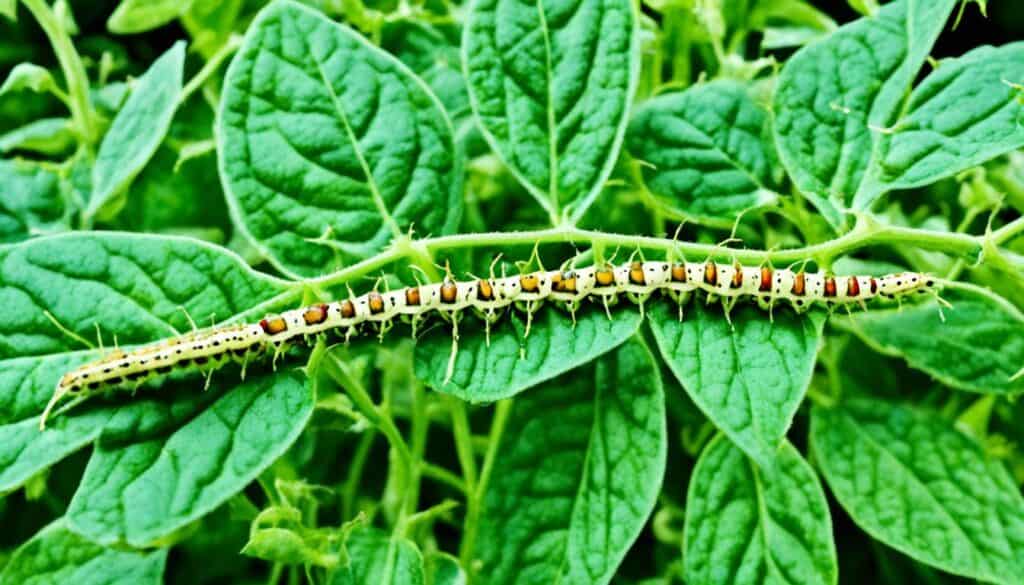



Leave a Reply